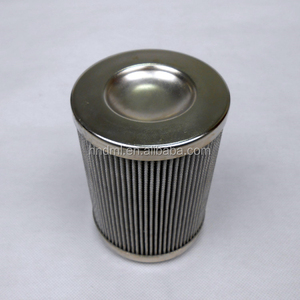
All categories
Featured selections
Trade Assurance
Buyer Central
Help Center
Get the app
Become a supplier

(982 products available)














































The Fleetguard filter company makes generator filters in three main types. These are air, oil, and fuel filters. All these filters work together to keep the generator engine clean and run smoothly.
The specifications of a generator Fleetguard filter depend on its type, model, and its generator's capacity. The filters have different dimensions to suit various generator sets. The specifications also indicate the filter's flow rate. The flow rate has to be ideal to ensure that enough fuel or oil circulates in the system. Additionally, the filter's micron rating is crucial, as it specifies the size of particles the filter can capture. Bigger filter cartridges can be used for diesel generators with larger capacities, thus, their specifications will be bigger. Overall, the filter specifications should match the requirements of the generator engine.
For optimal engine performance, it is important to regularly replace the Fleetguard generator filters. Adhering to the recommended maintenance schedule will help prolong the life of the generator. First, the user should consult the generator manufacturer manual. The user manual will provide the correct Fleetguard filter for the generator set. While executing the maintenance task, the user should take safety precautions and wear protective gear. Before proceeding to replace the filter, the user should take note of the flow direction indicated on the filter. The user should also inspect the surroundings to ensure there are no contaminants that can enter the fuel line or tank.
When replacing the filter, the user should start by removing the old filter. If applicable, the user should drain the fuel from the filter but be very cautious so as not to spill any. Then the user can clean the filter mounting base. Before installing the new filter, a small amount of the new filter’s fuel should be added to the new filter’s gasket. This will ensure an airtight seal and prevent leaks. Then, the user should carefully install the new filter ensuring the correct flow direction. Once the new filter is in place, the pre-filled fuel should be circulated in the filter by cranking the generator for a few minutes. Finally, the user should check for leaks in the newly installed filter.
Fleetguard offers different filters, each designed to provide the necessary protection for the specific application. These filters feature new media in material, combining cellulose and synthetic, to improve efficiency while minimizing restriction. The usage scenarios are as follows:
When purchasing Fleetguard generator filters, it's crucial to ensure that they provide comprehensive engine protection. Choosing the right Fleetguard generator filters for the business is more than just selecting a product; it's about safeguarding investments and ensuring the smooth operation of equipment.
Cross-reference with Existing Filters:
When buying Fleetguard filters, it's essential to ensure that the filters being purchased are the correct ones for the specific generator model. To do this, cross-referencing with the existing filters in the generator can be helpful. This means that the buyer should take note of the filters currently in use and their specifications, including their part numbers, sizes, and shapes. By doing this, the buyer can ensure that the new filters will fit and function correctly in the generator. This will help avoid any potential issues or complications arising from using filters that are incompatible with the generator.
Check the Filter's Construction:
When purchasing Fleetguard filters, it's important to consider the filter's construction. The filter's manufacture involves using different materials for the media, end caps, and seals, each of which plays a critical role in the filter's performance. The filter media is the part that captures dirt and contaminants, and it may be made from various materials, including cellulose, synthetic, or blended fibers. To ensure optimal protection and compatibility with the generator's requirements, choose filters with durable end caps and seals. The end caps and seals help to maintain the filter's structural integrity and ensure a proper seal, preventing any bypass of unfiltered air or oil.
Consider the Generator's Working Environment:
When selecting Fleetguard filters for purchase, it's important to consider the generator's working environment. The generator's operating conditions can significantly impact the filter's performance and the level of protection required. If the generator operates in a harsh environment characterized by high dust, sand, or other airborne contaminants, choosing a Fleetguard dust filter would be best. A dust filter is specifically designed to capture and hold fine particles, including dust and sand, preventing them from entering the generator's engine and causing damage.
Q1. What does the generator fuel filter do?
A1. The generator fuel filter's main job is to filter out any impurities and keep the fuel clean so the generator can run smoothly.
Q2. Do generator filters actually work?
A2. Yes, generator filters work by trapping dust particles, mold, and bacteria to prevent them from clogging the fuel lines or getting into the injector nozzles.
Q3. How often should the generator Fleetguard filters be replaced?
A3. It is generally recommended to replace the generator filters every time the generator's oil is changed, which is usually after 150 to 300 hours of operation.
Q4. Are Fleetguard filters as good?
A4. Fleetguard filters are well-known premium products in the market and are often considered equal to the best.